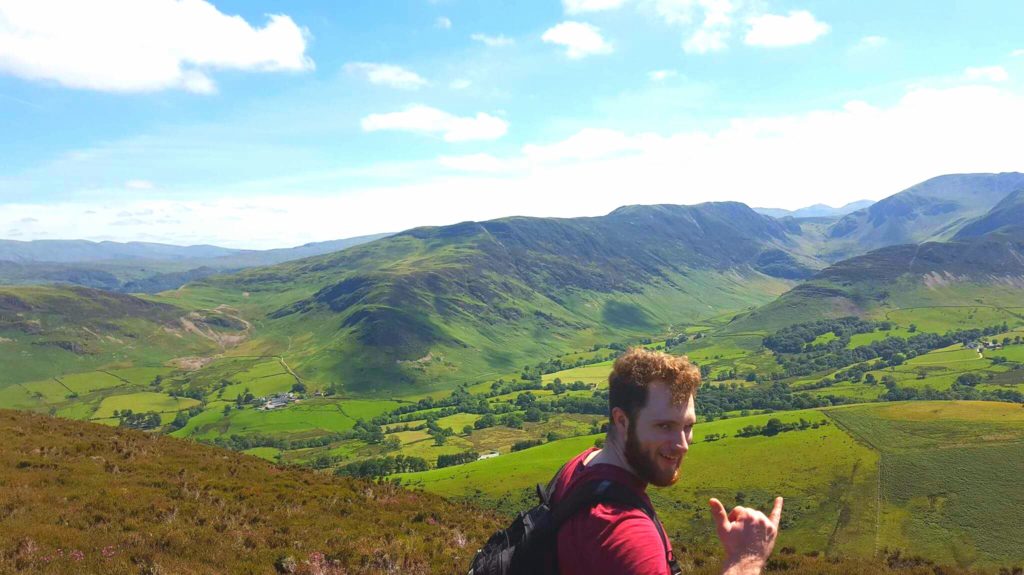
| Academic Year | 2019-2020 |
| h.johnson.19@abdn.ac.uk | |
| Institution | University of Aberdeen |
Biography
School: School of Geosciences
Project: Groundwater and nutrient dynamics in heterogeneous agricultural catchments
Supervisors: Dr Jean-Christophe Comte, Dr Ulrich Ofterdinger and Dr Mads Troldborg (James Hutton Institute)
Undergraduate Education: MSci Earth and Environmental Science, University of Lancaster
Postgraduate Education: N/A
Research: My QUADRAT DTP project focuses on groundwater and nutrient dynamics in heterogenous catchment areas, but what does this mean? When farmers apply fertilisers to their crops, a considerable amount is never uptaken by the plants themselves, rather the nutrients are washed through the soil profile by rain into the underlying bedrock, where they are transported into the draining river system. This environmental problem has been extensively studied in the chalk and sandstone aquifers of Southern England for decades, however, the metasedimentary rocks of the Dalradian Groups of NE Scotland and Northern Ireland, groundwater has often been dismissed as an insignificant hydrologic pathway.
It is now recognised that hard-rock environments deliver significant amounts of water (and nutrients) to river systems, either through networks of interconnected fractures, or along the partially decomposed (weathered) surface of the bedrock topography.
For each catchment study, my research will consist of three main stages:
- Geological model constructionI will be assimilating historical geologic datasets to develop a conceptual model of the subsurface. This will be achieved through relating high-resolution geophysical survey data to borehole logs and surface outcrops, guided by the rich history of geological fieldwork conducted in Scotland and Northern Ireland. As a great deal of uncertainty exists when modeling the subsurface (or drawing what you can’t see) several of the most realistic / plausible models will advance to the next stage.
- Groundwater model testingThe most realistic geological models will be used to simulate groundwater flow in the area using rainfall, river discharge and groundwater table elevation measurements. These simulations will be further constrained by groundwater residence times established through stable isotope analysis of water molecules in wells and river waters.
- Interpretative modeling / forecasting climate changeThe geologic model that best reproduces observations of nutrient distributions, groundwater travel times and groundwater table elevations will be used to further explore how the system behaves. For example, the model can be used to simulate various land-uses in different areas of the catchment to predict the consequences to river nutrient loadings. Providing the models are sufficiently robust, they can be used to simulate changes in groundwater and nutrient dynamics at the catchment scale in response to IPCC-predicted climate forcing in the future.
External Collaborators:
- Dr Rachel Cassidy, AFBI
Relevant Articles:
- Combining multi-scale geophysical techniques for robust hydro-structural characterisation in catchments underlain by hard rock in post-glacial regions
- The typology of Irish hard-rock aquifers based on an integrated hydrogeological and geophysical approach
- Coupling ground and airborne geophysical data with upscaling techniques for regional groundwater modeling of heterogeneous aquifers: Case study of a sedimentary aquifer intruded by volcanic dykes in Northern Ireland
- Integrating petrography, mineralogy and hydrochemistry to constrain the influence and distribution of groundwater contributions to baseflow in poorly productive aquifers: Insights from Gortinlieve catchment, Co. Donegal, NW Ireland
LinkedIn: https://www.linkedin.com/in/hamish-johnson
Research Gate: https://www.researchgate.net/profile/Hamish_Johnson5/





















































